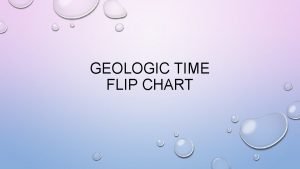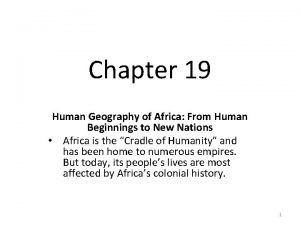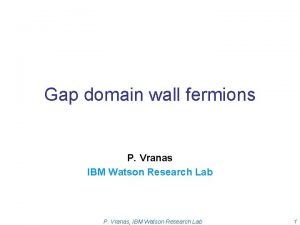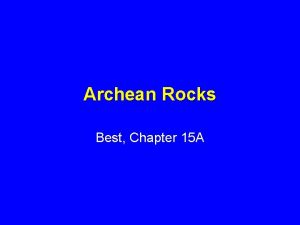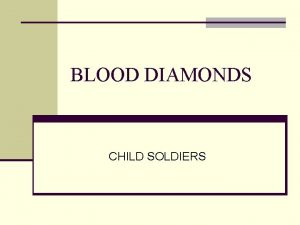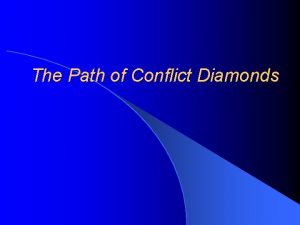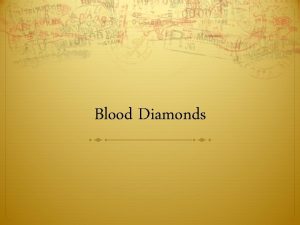Diamonds in Archean Shoshonitic Lamprophyres Conclusions n The











- Slides: 11

Diamonds in Archean Shoshonitic Lamprophyres - Conclusions n The mixed peridotitic - eclogitic character of diamond inclusions; low-P inclusions (plagioclase) n Shoshonitic character of the host rocks n Old-source Metasomatism in sub-arc style low-Al websterites n Orogenic Setting of host dikes and related plutonic and volcanic rocks & Association with Lode Gold --> All implicate a shallow diamond source that requires a cold finger effect in the Archean Upper Mantle The P-T requirements can only be met Subduction Tectonics

Diamond-Bearing Shoshonitic Lamprophyres In situ diamonds first found in 2. 7 Ga lamprophyres near Wawa, then in an Abitibi occurrence. Ongoing analysis by the Ont Geol Survey continues to find more Abitibi occurrences Timing, setting, host rocks are all wellconstrained

Diamonds in Xenolithic Lamprophyre Dikes (2674 ± 8 Ma) and Breccia Diatremes (2679. 2 ± 2. 1 Ma ) Wide range of diamond morphologies, inclusion types, complex N systematics In diamond host lamprophyres the matrix is inherently primitive (14 wt% Mg) ). A special magma? No, a spectrum of variably evolved 2674 Ma magmas exists but longer crustal residence times guarantees no diamond preservation in low-Mg examples. Abundant ultramafic xenoliths signifies rapid (± energetic) ascent.

Metasomatised Low-Al Websterite Xenoliths: Higher Rare Earth Content = “Old depleted mantle” Nd isotope signature (previously melted) T = 2674 Ma, assuming REE systematics are re-set near the time of dike emplacement 2. 7 Ga upper mantle Hydrous fluids derived from an old source (100’s of Ma) - probably linked to Wawa 3 Ga Events/Sources

Geodynamic Constraints Any model must: n Be consistent with lamprophyre geochemistry (and that of related shoshonitic syenites, trachytes, etc) that requires a subduction-style modified mantle source n Meet diamond P-T requirements via a shallow mantle magma n Fit the upper crustal orogenic context associated with the time of lamprophyre emplacement n Be consistent with the emplacement of Orogenic (vein) Gold deposits n Accommodate arc-basement style (cumulate) websterites overprinted by water-rich fluids that have “seen” old rocks

Subduction Diamonds: Griffin et al. Model for NSW 500, 000 carats (placer diamonds) Diamond-bearing slab punctured by deep lamproitic ( ) magma Not consistent with shoshonitic lamprophyre depths ( ) of origin or subduction-related chemistry

Another distinctive feature of the southern Superior is the presence of “High-silica” adakites (the adakites of Drummond & Defant)

Diamonds in shoshonitic lamprophyres can be linked to subduction via models of adakite genesis Not to be confused with pre-2. 7 Ga flat subduction! In the Gutscher et al model early slab melting and adakites are followed by freezing of the mantle wedge …. . leads to a conceptual model for diamonds in and above a “flat” subducting slab at depths appropriate for entrainment in shoshonitic lamprophyres (Wyman et al. )

Ellipsis Modeling: Flat subduction & Orogeny (O’Neil & Wyman) a b c • • As predicted, the mantle wedge freezes during flat subduction • At the start of orogeny, a continuous zone of diamond stability The wedge enters the diamond stability field extends from the slab through the wedge into the cratonic root • • The wedge begins to reheat as the slab sinks after subduction “Subduction-style” magmas ascend as the slab sinks (red arrow)

Flat Subduction Model: Multiple Diamond Histories

Conclusions The association of diamondbearing shoshonitic lamprophyres is a direct consequence of flat subduction prior to orogeny. Moreover, flat subduction after a widespread plume event links komatiite distribution with high silica adakites, subduction diamonds, and major gold deposits…. .
 Rubric for designing geological time scale
Rubric for designing geological time scale What is a generic rectangle
What is a generic rectangle Which career action can get you diamonds
Which career action can get you diamonds Acres of diamonds apush
Acres of diamonds apush Conflict diamonds lupe
Conflict diamonds lupe The mutapa empire thrived on the trade of diamonds
The mutapa empire thrived on the trade of diamonds Ddl diamonds
Ddl diamonds The jungle is dark but full of diamonds
The jungle is dark but full of diamonds Blood diamonds real story
Blood diamonds real story Move 2 matchsticks to make 5 equal diamonds
Move 2 matchsticks to make 5 equal diamonds Gdwf
Gdwf A matter of diamonds
A matter of diamonds
